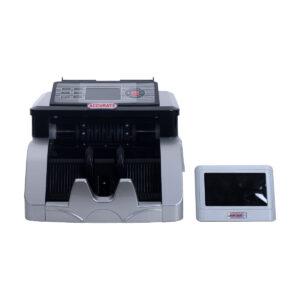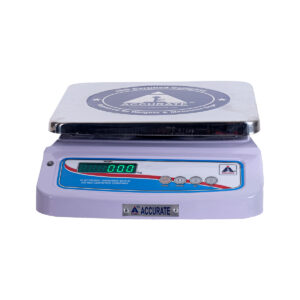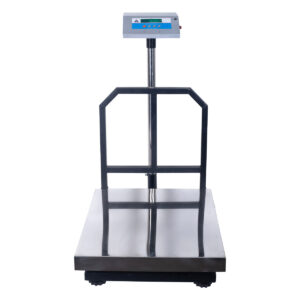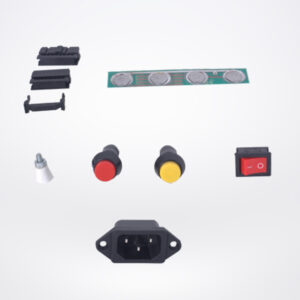POS SYSTEM:
HOW TO SET UP A POS SYSTEM WITH SCALE CAPABILITIES?
CHOOSE YOUR HARDWARE :
Point of sales (POS) is the instance where the buyer or consumer is prompted to pay for the product or service he or she is availing of. Consequently, a POS system is a business structure that offers a convenient way for customers to make a payment. In most cases, POS systems use product barcodes to determine the price they have to pay for every item. Barcodes are indeed helpful in many retail businesses, however, there are situations when a cashier would still need to enter the weight of the product for the POS machine to compute the cost of purchase.This is where a POS system with scale capabilities is most advantageous. It helps businesses, especially those in the field of retailing to create UPC labels for items sold by weight. Some of these units also come with a receipt printer for an automated checkout procedure. You may consider the steps below if you plan to connect your scale to a POS system. Decide whether you would go for a single or multi-hardware POS system. A single-hardware POS involves all the components together in one item including a processing unit, printer, LCD and platform scale. In this case, you may want to try the trade-approved price computing scale. A multi-hardware POS, on the other hand, entails several separate components that are connected with cables. In some cases, a digital weighing scale with advanced features may only need a printer to complete the system.You may also choose to connect your counting scale to a laptop, computer or tablet and download a POS application. When opting for a multi-hardware or computer- enabled system, make sure that all components are compatible with each other. If you are unsure of the unit’s compatibility, you may ask a reliable scale provider near you, so they can recommend the unit that best suits your needs.
CONFIGURE AND CALIBRATE THE SCALE:
If you are in a grocery or supermarket business, you may need a database to store all the information needed for your POS system. After an onsite calibration with your provider, make sure to configure the scale according to the requirements of your business. This may include connecting to your database for a centralised information and pricing system.
CONFIGURE THE POS MACHINE AND PRINTER:
If you are using a separate POS machine and printer, make sure to have your tech support team configure them according to your business needs. If you are using a scale printer, you may ask your provider to help you with the configuration.
INTEGRATE THE SCALE CONFIGURATION WITH THE SYSTEM:
Both the scale and the POS machine should be configured to work together and produce the necessary output that you intend and expect.For this reason, you need to ensure that all devices are perfectly working before deploying them to your sales area and checkout counters. In the same manner, your POS system should be prepared and running atleast an hour before business hours.
TEST RUN:
Lastly, it is important to make a test run to address any and all problems or system glitches before using the POS system. If you troubleshoot system failures during business hours, it can create delay and loss of sales.
HOW TO SET UP A POS SYSTEM WITH SCALE CAPABILITIES?
CHOOSE YOUR HARDWARE :
Point of sales (POS) is the instance where the buyer or consumer is prompted to pay for the product or service he or she is availing of. Consequently, a POS system is a business structure that offers a convenient way for customers to make a payment. In most cases, POS systems use product barcodes to determine the price they have to pay for every item. Barcodes are indeed helpful in many retail businesses, however, there are situations when a cashier would still need to enter the weight of the product for the POS machine to compute the cost of purchase.This is where a POS system with scale capabilities is most advantageous. It helps businesses, especially those in the field of retailing to create UPC labels for items sold by weight. Some of these units also come with a receipt printer for an automated checkout procedure. You may consider the steps below if you plan to connect your scale to a POS system. Decide whether you would go for a single or multi-hardware POS system. A single-hardware POS involves all the components together in one item including a processing unit, printer, LCD and platform scale. In this case, you may want to try the trade-approved price computing scale. A multi-hardware POS, on the other hand, entails several separate components that are connected with cables. In some cases, a digital weighing scale with advanced features may only need a printer to complete the system.You may also choose to connect your counting scale to a laptop, computer or tablet and download a POS application. When opting for a multi-hardware or computer- enabled system, make sure that all components are compatible with each other. If you are unsure of the unit’s compatibility, you may ask a reliable scale provider near you, so they can recommend the unit that best suits your needs.
CONFIGURE AND CALIBRATE THE SCALE:
If you are in a grocery or supermarket business, you may need a database to store all the information needed for your POS system. After an onsite calibration with your provider, make sure to configure the scale according to the requirements of your business. This may include connecting to your database for a centralised information and pricing system.
CONFIGURE THE POS MACHINE AND PRINTER:
If you are using a separate POS machine and printer, make sure to have your tech support team configure them according to your business needs. If you are using a scale printer, you may ask your provider to help you with the configuration.
INTEGRATE THE SCALE CONFIGURATION WITH THE SYSTEM:
Both the scale and the POS machine should be configured to work together and produce the necessary output that you intend and expect.For this reason, you need to ensure that all devices are perfectly working before deploying them to your sales area and checkout counters. In the same manner, your POS system should be prepared and running atleast an hour before business hours.
TEST RUN:
Lastly, it is important to make a test run to address any and all problems or system glitches before using the POS system. If you troubleshoot system failures during business hours, it can create delay and loss of sales.








